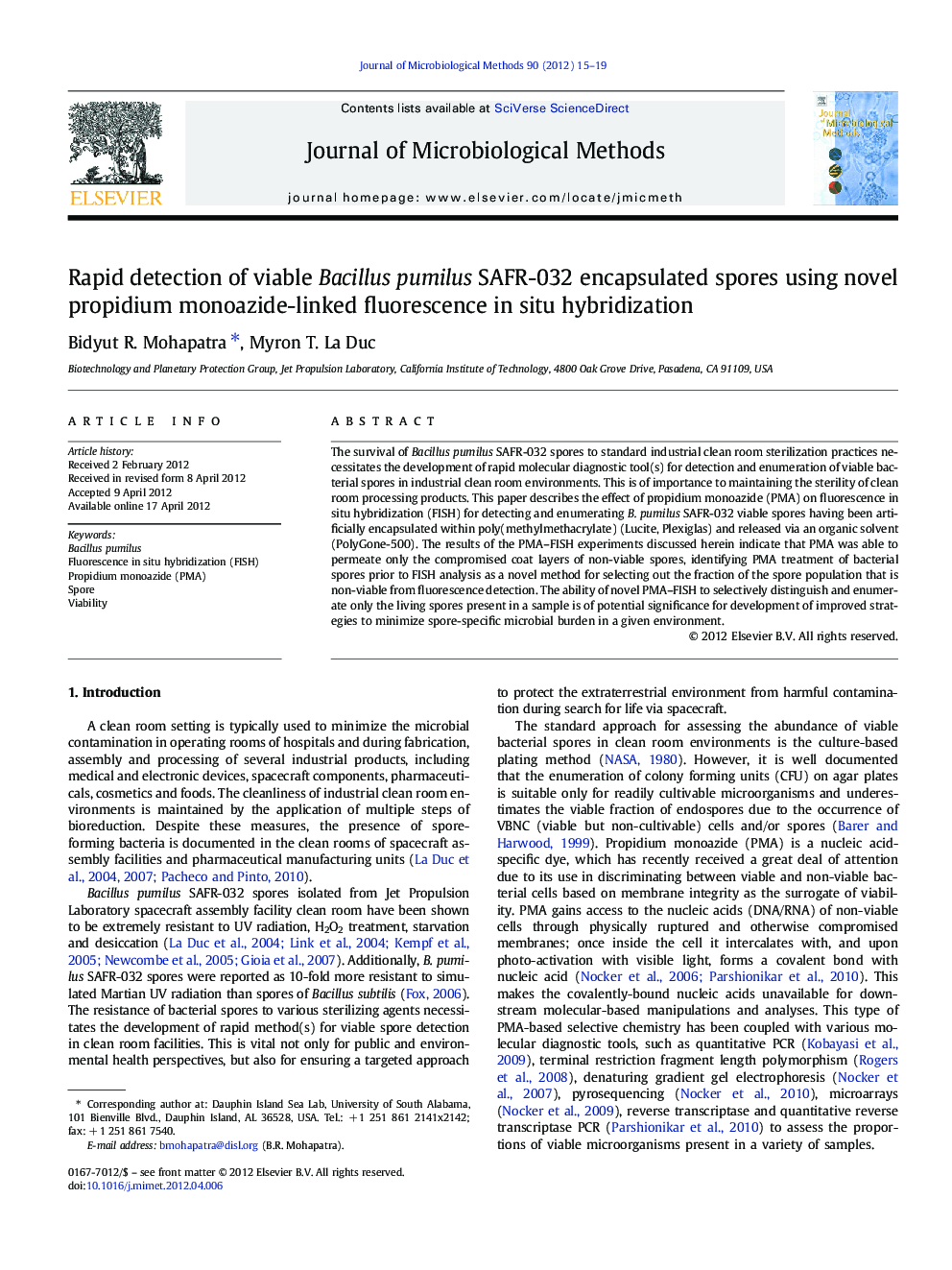| Article ID | Journal | Published Year | Pages | File Type |
|---|---|---|---|---|
| 2090245 | Journal of Microbiological Methods | 2012 | 5 Pages |
The survival of Bacillus pumilus SAFR-032 spores to standard industrial clean room sterilization practices necessitates the development of rapid molecular diagnostic tool(s) for detection and enumeration of viable bacterial spores in industrial clean room environments. This is of importance to maintaining the sterility of clean room processing products. This paper describes the effect of propidium monoazide (PMA) on fluorescence in situ hybridization (FISH) for detecting and enumerating B. pumilus SAFR-032 viable spores having been artificially encapsulated within poly(methylmethacrylate) (Lucite, Plexiglas) and released via an organic solvent (PolyGone-500). The results of the PMA–FISH experiments discussed herein indicate that PMA was able to permeate only the compromised coat layers of non-viable spores, identifying PMA treatment of bacterial spores prior to FISH analysis as a novel method for selecting out the fraction of the spore population that is non-viable from fluorescence detection. The ability of novel PMA–FISH to selectively distinguish and enumerate only the living spores present in a sample is of potential significance for development of improved strategies to minimize spore-specific microbial burden in a given environment.
► Bacillus pumilus SAFR-032 spores were encapsulated in poly(methylmethacrylate). ► PMA was linked with FISH to determine encapsulated endospore viability. ► PMA–FISH selectively visualize and enumerate viable encapsulated endospores.
